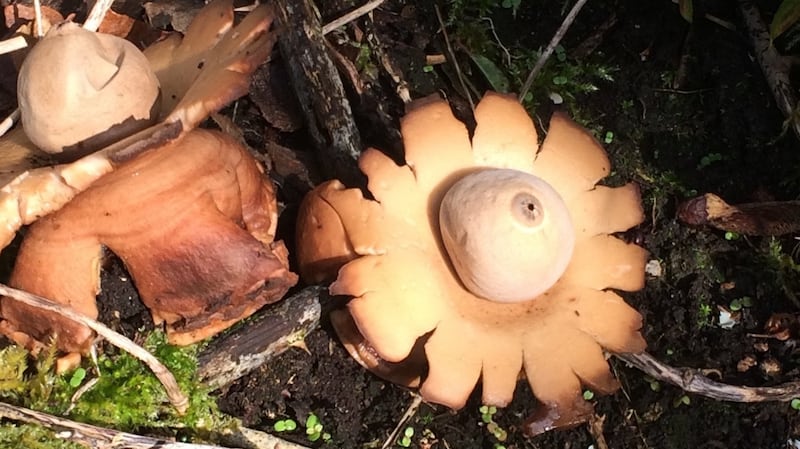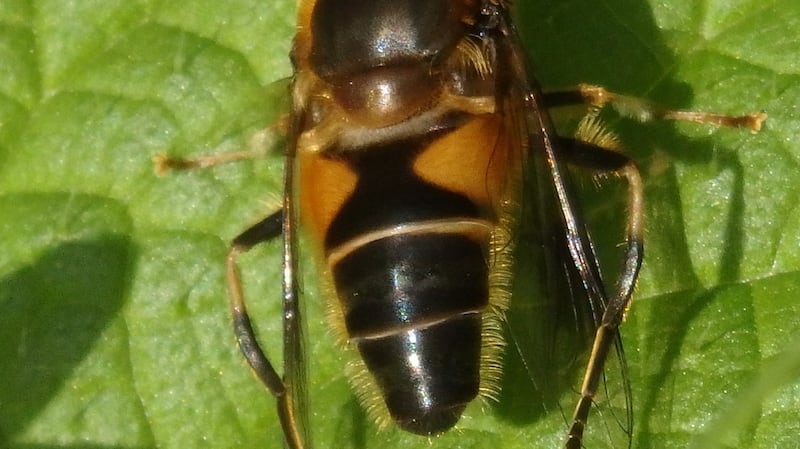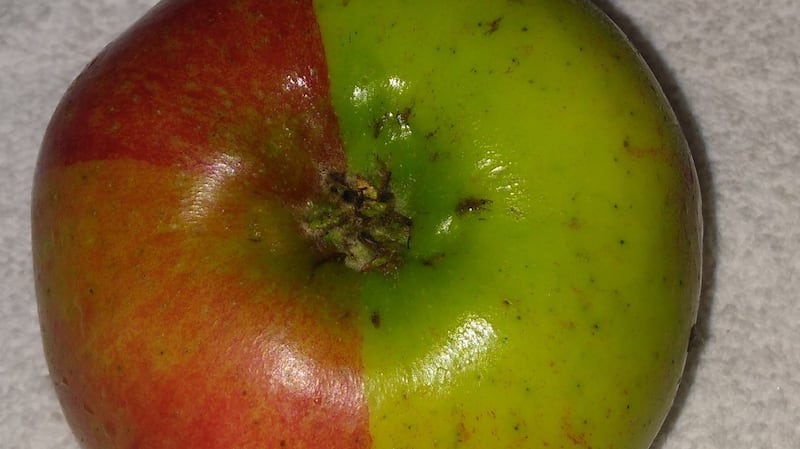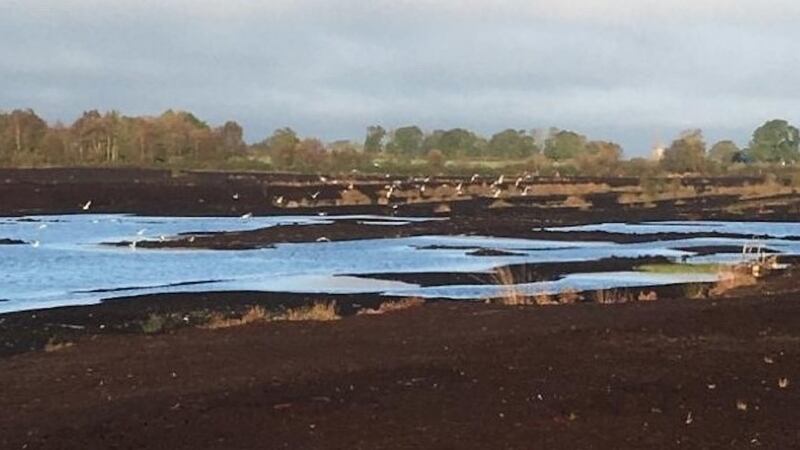I found these on the south strand in Rush Co Dublin. They were soft and wrinkly with just a seaweed smell. In some that were not broken there seemed to be tadpole-like thing. – Catherine Coyle. Rush, Co Dublin
Prof Michael Guiry of UCG tells me that they are ascidians (sea squirts), perhaps Ascidiella aspersa.

We spotted this fungus in a corner of the garden and we think it is an earth star.
– Brigid Glynn, Culleenduff, Co Sligo
Yes, it is.

We found these bees on nettles in our garden. They appeared to be sunning and scrubbing themselves. Are they Irish black bees? – Nelleke McGrath, Corofin, Co Clare
They are hoverflies, not bees. One is an ordinary drone fly and the other is the tapered drone fly, Eristalis pertinax.
We have hazel trees in our garden hedge and I was amazed to see up to a dozen rooks foraging for hazel nuts there. They were picking up nuts, flying away with them in their beaks and making return journeys. Would it be possible for them to open them or are they storing them for a rainy day? – Lois Bell, Castletroy, Co Limerick
Rooks have been recorded storing hazel nuts among others, so presumably they eventually can open them.

Here's a strange-looking apple from Eileen Lynch's apple orchard in Abbeyleix. The apple is divided in two, one side green and one side red. I think it was from a red Bramley and there are green Bramleys in the orchard as well. – Peadar Lynch, Abbeyleix, Co Laois
That would suggest that the apple blossom must have been pollinated from the two different Bramley species.

Littleton briquette factory closed almost two years ago and the surrounding bog now retains a lot of water due to closing of drains and outfalls. Hundreds of seagulls now roost nightly in the flooded peat fields. –Gerard Neville, Thurles, Co Tipperary
Ethna Viney welcomes observations and photographs at Thallabawn, Louisburgh, Co Mayo, F28 F978, or by email at viney@anu.ie. Please include a postal address.




















